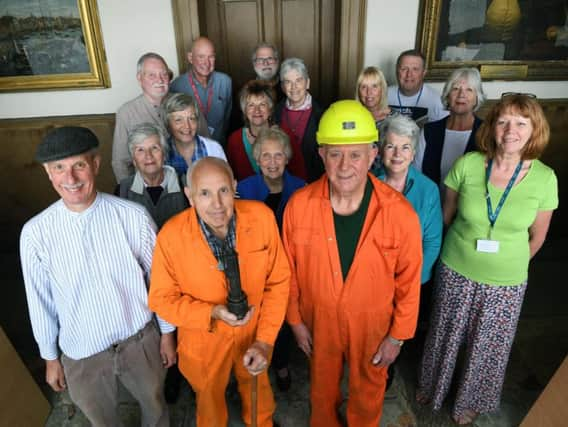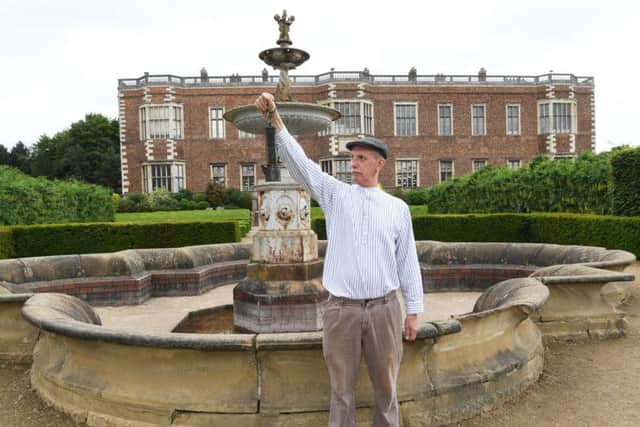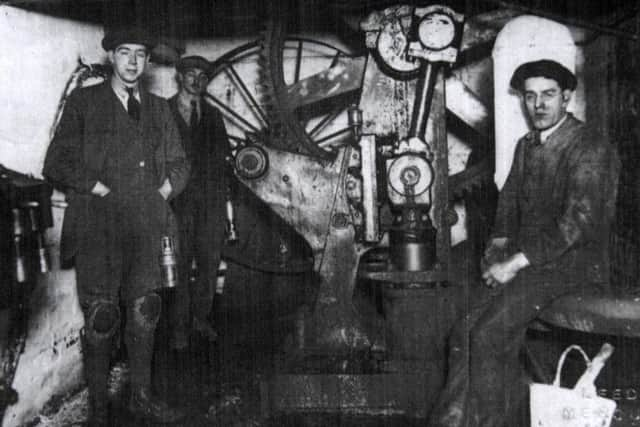Miners dig deep to unearth estate’s pit history at Temple Newsam, Leeds


Blot on the Landscape, a new exhibition at Temple Newsam House, explores stories of deep shaft, drift and open cast mining on the estate, which once saw large swathes of the stunning parkland dug up to make way for huge industrial operations.
Through a series of objects collected by local miners over decades, including a bible made of coal and an anthracite inkwell, visitors will get a unique, first-hand insight into what life was like for those who toiled down the estate’s former Waterloo pit.
Advertisement
Hide AdAdvertisement
Hide AdFormer coal miner Tony Banks will be telling the public about his 38 years ‘down the pit’.


The fifth generation miner, who worked with his family at Manor Colliery in Wakefield from 1957 as a pony driver, then moved to Lofthouse Colliery in 1966 and later worked at Selby.
He was working at Lofthouse in 1973, on the night of the pit disaster which claimed seven lives. He was involved in the rescue attempts and later set up the Lofthouse Disaster Trust Fund, of which he is chairman.
Tony, 76, of Wakefield, said: “People will be interested and enjoy this exhibition. I will be bringing a miner’s Davy lamp which dates back to 1848.
Advertisement
Hide AdAdvertisement
Hide Ad“We really enjoy talking about life down the pit. Sadly, there are no working pits left in this area now.


“I tell people about the conditions we faced down the mines. It was really hard graft.”
Tony, who also volunteers at the National Coal Mining Museum, near Wakefield, works tirelessly in former mining communities.
The Temple Newsam estate was the setting for a succession of huge mining operations as recently as the late 1970s, with similarly large-scale digs throughout the 1940s.
Advertisement
Hide AdAdvertisement
Hide AdUncovering an important chapter of Leeds’s heritage, the new exhibition has seen community curator Helen Pratt work with Swillington Elderberries, a local group of volunteers which also includes former miners.
Together, they researched the history of Temple Newsam’s pits and talked to former miners from North, South and West Yorkshire and loaned objects which encapsulated their time down the mines.
Artists from Yorkshire and Northumberland have also created artworks for the exhibition and The Elderberries crafted a Yorkshire design rag rug for the exhibition. Rag rugs were commonly made in households up to the middle of the 20th Century by prodding scraps of fabric through the weave of old sacking.
Helen said: “It’s been a privilege to work alongside miners and local volunteers and to learn more about their experiences working at Temple Newsam at a time when it was so profoundly different to the way we see it now.
Advertisement
Hide AdAdvertisement
Hide Ad“It’s hard to imagine, but the stunning greenery which surrounds the mansion today was once the setting for massive, industrial mining operations which were deemed essential for the provision of fossil fuels nationwide.
“Thankfully the estate has recovered in the intervening decades, but what’s left is a fascinating legacy of experience and history which those who worked down those mines have shared with us in this exhibition.”
Blot on the Landscape will be at Temple Newsam House until October 31.
FACTFILE
Temple Newsam House was surrounded by a wasteland, effectively scalped thanks to an open coal mine on the estate, which closed in 1976.
Advertisement
Hide AdAdvertisement
Hide AdThe site was said to have six seams of coal, some as deep as 180ft - in July 1975, it was down to the last 500,000 tons.
Despite the 970-acre site being donated to Leeds City Council in 1922 on the grounds it be used “as a public park”, the open-cast mining operation had been in place since 1943.
Although Leeds councillors put up a strong opposition, the Ministry of Fuel and Power forcibly requisitioned the land from Leeds on September 1, 1942 and again on July 21, 1945.
One monstrous crane towered three storeys high, built in the US and made for scraping away topsoil, it had three men operating it and was called ‘The 600’.